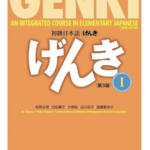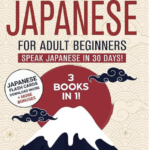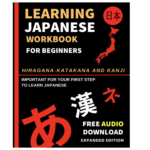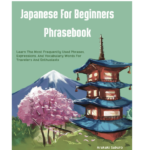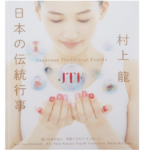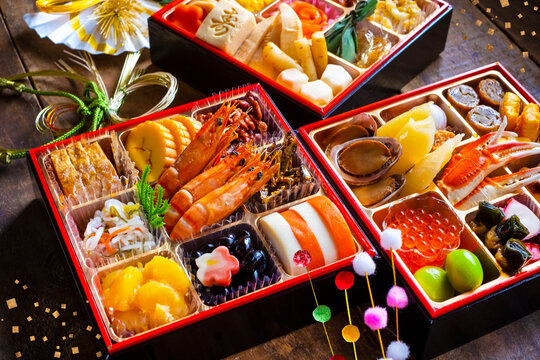
Osechi ryori is a traditional Japanese New Year's cuisine with a history dating back to the Nara period. Originally used as "offering dishes" in sacred rituals to honor gods and ancestors, the concept evolved during the Heian period into a symbolic New Year's dish associated with crossing into the new year.
In the Edo period, upscale restaurants and certain merchants started offering luxurious osechi dishes, gradually making it more widespread. By the Meiji era, it became accessible even in lively households, firmly establishing itself as part of a common culture for the general public.
Osechi dishes often include auspicious items or phrases, with most carrying meanings that invite good fortune. For instance, black soybeans symbolize a wish for "increasing prosperity." Osechi ryori significantly adds vibrancy to Japan's New Year, serving as an essential element to welcome the new year with family and loved ones.
Japanese
おせち料理の歴史
おせち料理は、日本の伝統的なお正月料理で、その歴史は古く、奈良時代に遡ります。元々は、神様や先祖を祀る神聖な行事に用いられる「お供え料理」として始まりました。平安時代には、この概念が発展し、年越しの縁起物として「年越し料理」となりました。
江戸時代になると、料亭や一部の商家が贅沢なおせちを提供し、これが徐々に広まっていきました。明治時代に入り、賑やかな家庭でも食べられるようになり、一般庶民の文化として根付いていきました。
おせちの中には縁起を招く縁起物や、縁起のいい言葉に由来するものが多く取り入れられており、そのほとんどが縁起を招く意味が込められています。例えば、黒豆は「更に豊かになるように」という意味合いがあります。おせち料理は、日本の新年を彩り、家族や親しい人たちと共に新しい年を迎える重要な文化となっています。
Words
| Japanese | Hiragana | English |
|---|---|---|
| おせち料理 | おせちりょうり | New Year's dishes |
| お正月 | おしょうがつ | New Year's Day |
| 伝統的 | でんとうてき | Traditional |
| 歴史 | れきし | History |
| 奈良時代 | ならじだい | Nara period |
| 神様 | かみさま | God |
| 先祖 | せんぞ | Ancestors |
| 神聖 | しんせい | Sacred |
| 行事 | ぎょうじ | Event |
| お供え料理 | おそなえりょうり | Offering dish |
| 平安時代 | へいあんじだい | Heian period |
| 概念 | がいねん | Concept |
| 発展 | はってん | Development |
| 年越し | としこし | New Year's Eve |
| 縁起物 | えんぎもの | Good luck charm |
| 江戸時代 | えどじだい | Edo period |
| 料亭 | りょうてい | Ryotei (traditional Japanese restaurant) |
| 商家 | しょうか | Merchant house |
| 贅沢 | ぜいたく | Luxurious |
| 提供 | ていきょう | Offer |
| 広まる | ひろまる | Spread |
| 明治時代 | めいじじだい | Meiji period |
| 賑やか | にぎやか | Lively |
| 家庭 | かてい | Household |
| 庶民 | しょみん | Common people |
| 文化 | ぶんか | Culture |
| 根付く | ねつく | Take root |
| 中に | なかに | Inside |
| 縁起を招く | えんぎをまねく | Invite good fortune |
| 縁起のいい言葉 | えんぎのいいことば | Auspicious words |
| 縁起物 | えんぎもの | Good luck charm |
| 意味 | いみ | Meaning |
| 取り入れる | とりいれる | Adopt |
| ほとんど | ほとんど | Mostly |
| 縁起 | えんぎ | Good fortune |
| いい意味合い | いいいみあい | Positive connotation |
| 黒豆 | くろまめ | Black soybeans |
| 更に豊かになるように | さらにゆたかにように | To become even more prosperous |
| 新年 | しんねん | New Year |
| 彩り | いろどり | Coloring |
| 家族 | かぞく | Family |
| 親しい人たち | したしいひとたち | Dear ones |
| 共に | ともに | Together |
| 迎える | むかえる | Welcome |
| 重要 | じゅうよう | Important |
| 要素 | ようそ | Element |

